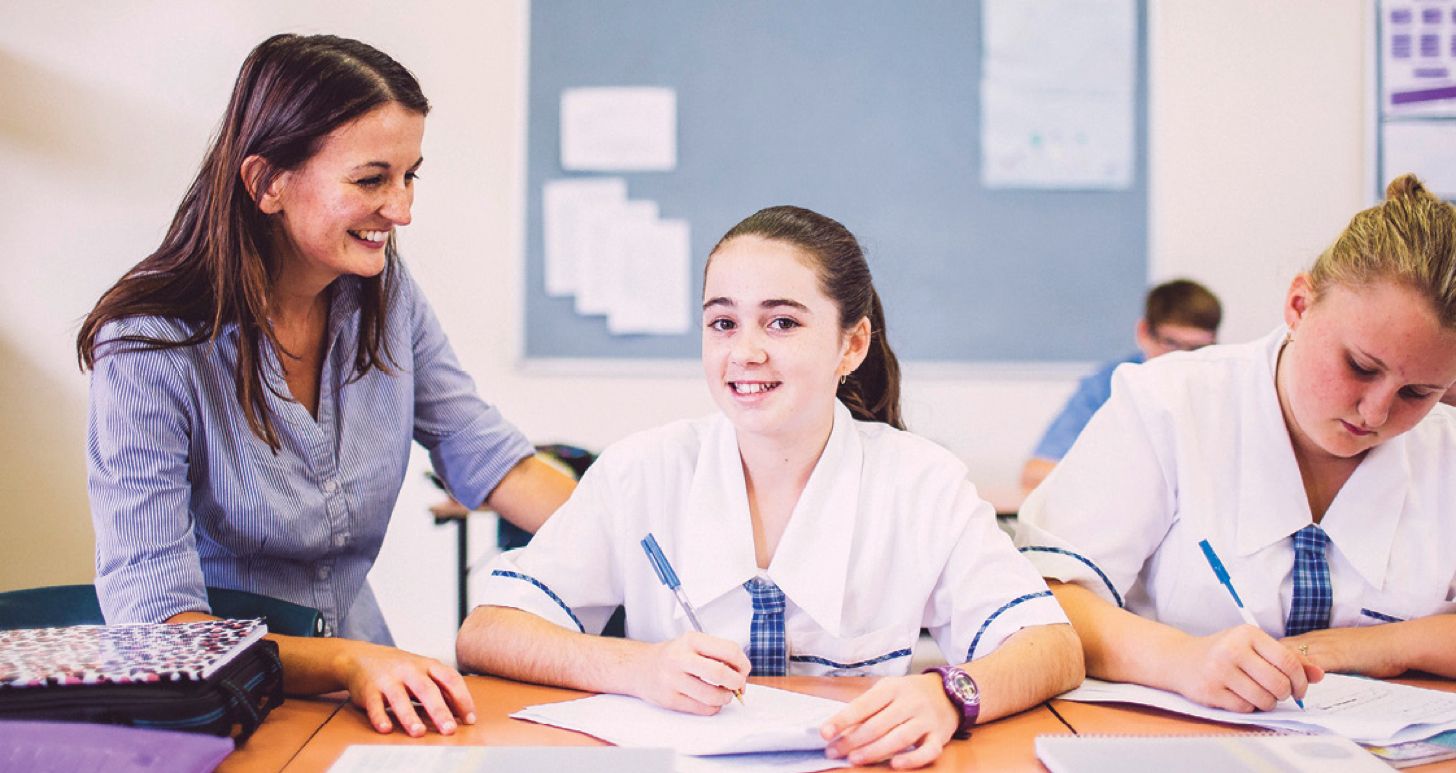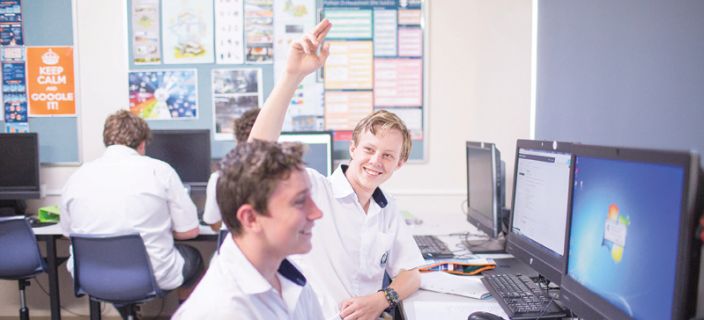Future proofing for small schools
When enrolments began dropping at St Mary’s Catholic College Casino the school had to come up with a way of making itself sustainable into the future, particularly in Stage 6. Rather than cut classes and risk losing more students, the school opted for a compressed curriculum, as Curriculum Leader Duncan Pollock tells IE Journalist Sue Osborne.

Pollock said a curriculum review around 2013 had identified a possible problem in the Stage 6 subject offerings for such a small secondary school.
“The only way to reduce classes is in the senior years because they are essentially electives, and that can lead you into a spiral where more students leave because they can’t access the subjects they want to do,” Pollock said.
Core science subjects such as physics and chemistry only had three or four students in each class some years, which was not sustainable.
“If you can’t keep these subjects running you risk losing your really good academic kids.”
In consultation with the Lismore Catholic Schools Office and via its own research, the executive team at St Mary’s decided adopting a compressed curriculum was the best way of “future proofing” the school.
The executive managed to find about 15 schools, mostly regional and some quite isolated, which had adopted this style, and consulted with them widely.
St Mary’s is now transitioning into the compressed curriculum this year.
Compressed curriculum means that Years 11 and 12 students work together in class. So in Term 4 Year 10 will begin their HSC learning with Year 11s.
Students study three subjects only in Year 11 and complete the preliminary and HSC courses for these three topics. The next three subjects are completed the following year.
As students are studying half as many subjects, twice as much teaching time is allocated to each subject – classes are one hour lessons but there is often two hours of classes in a day.
Pollock, the school’s Assistant Principal and the Leader of Pedagogy spent quite a while gathering information and models on compressed curriculum before the idea was floated with the school community.
“We didn’t want people imagining what it would be like and coming up with the worse case scenario,” Pollock said.
“ I had a good look at the structural side of things like timetabling and hours for subjects. Most schools we had spoken with were very positive about compressed curriculum.”
As a software and design teacher, Pollock said he has found daily two hour classes, or one hour before and after the lunch or recess breaks, allows him to “roll on” with learning.
“If you see students for an hour and then there’s a big gap, you might spend 10 minutes at the start of each lesson reminding them of what you did last time. It’s much fresher in their minds when you see them every day.
“In fact, a lot of teachers have found they have completed the preliminary course a lot sooner than they expected.”
Pollock said compressed curriculum offers more flexibility in timetabling, because he was able to put together line patterns offering two chances to do English and Studies of Religion for instance, so students were able to do their first choice subjects.
Prior to the compressed curriculum some students had been forced to take expensive TAFE courses or just miss out on a subject altogether.
We’ve never seen having two year groups in the class as a disadvantage. The younger kids in the class will be mixing with older kids that have already done three HSC exams.
Subjects like physics and chemistry, with the combined year group, could potentially have 10-15 students rather than three or four, which Pollock said offers a better dynamic, livelier and with more chances for discussion.
“We’ve never seen having two year groups in the class as a disadvantage. The younger kids in the class will be mixing with older kids that have already done three HSC exams.”
Concerns were raised initially, particularly by teachers of project based subjects that there would not be enough time to complete major projects for the HSC.
Pollock said while the calendar time for major projects has reduced, the classroom time is the same, if not slightly increased.
“Our TAS teachers used to have one hour classes for subjects such as woodwork. By the time they had unpacked it was nearly time to pack up again. Now they have the potential for two hour classes they are quite happy with the progress they can make.
“Once people got their heads around how the compressed curriculum works they were okay.
“One problem we hadn’t initially anticipated was the maturity of writing that develops over time. We are addressing that by doing more explicit teaching on how to approach long answer questions, tackling it a bit more quickly than we might do normally to get kids up to speed.”
The parent community has accepted the change, he said. At subject selection interviews parents gave positive feedback because their children could choose the subjects they wished to study.
Parents who have older children that have been through the traditional HSC process said they were finding the three subjects a year routine less stressful.
The doubling of lesson time had also sparked an interest in experimenting with new pedagogical techniques among some teachers.
Pollock and several others have introduced ‘flipped lessons’ or ‘flipped classrooms’.
Originating from the US, flipped teaching involves providing students with new content to study at home, usually in the form of an online video so that classroom time is devoted to discussion or practical application.
“That way students get to see the content twice, and they don’t do the hard work, applying it, at home.”
If you would like to speak to the St Mary’s executive about compressed curriculum, email the College at smhcas@lism.catholic.edu.au




































































































































